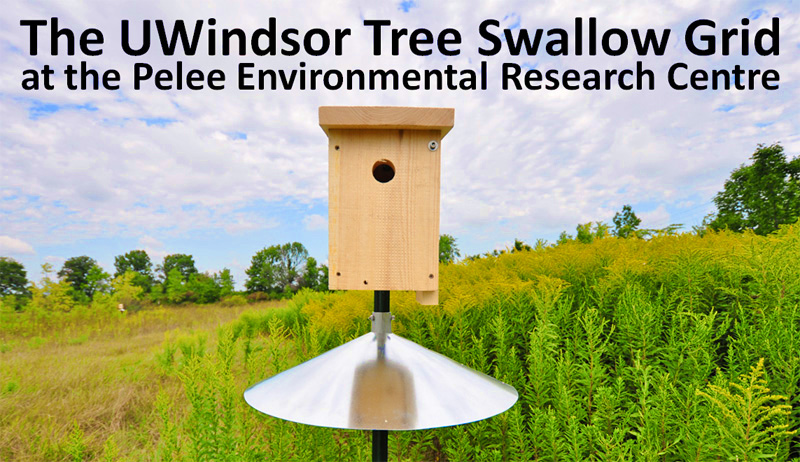
In
August 2011, seventeen researchers from the University of Windsor
set up fifty-one Tree Swallow nest boxes at the University's Pelee
Enviornmental Research Centre at Leamington. The nest box grid will be
an important resource for research and teaching as the University
continues to develop new projects in Essex County. This page chronicles
the day that the research team spent setting up the Tree Swallow nest
box grid. |
|

Dave Tremblay of the university's Technical Support
Centre, together with his colleagues Steve Budinsky and Rob
Dumouchelle, built the boxes according to the design recommended by the
Golondrinas
de las Americas project.
|
|
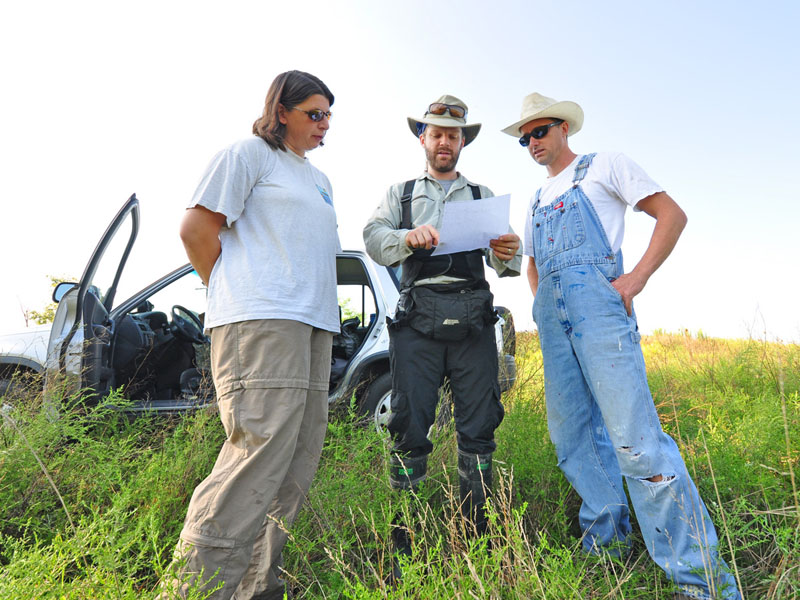
Kirsten, Dan, and Dennis plan where to put the fifty-one nest boxes at
the University
of Windsor Pelee Enviornmental Research Centre at Leamington.
|
|
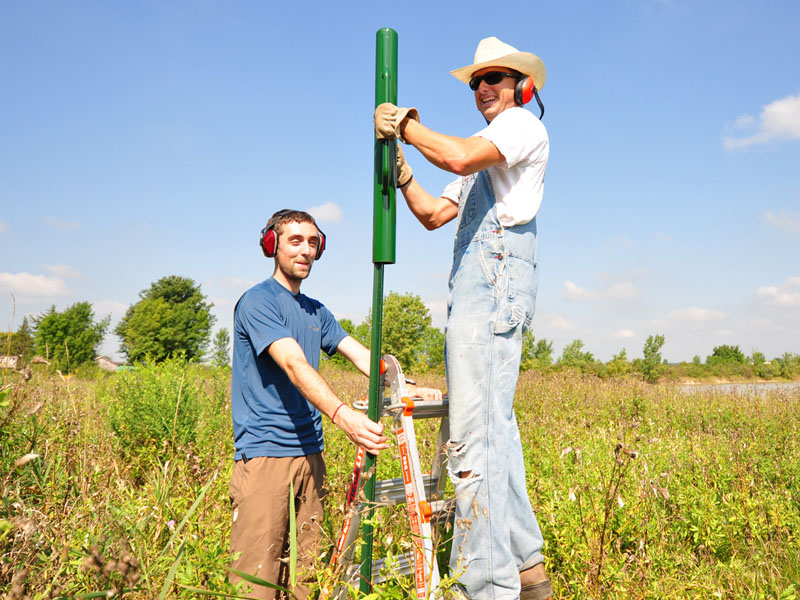
Dennis and Dugan drive a post into the ground.
|
|
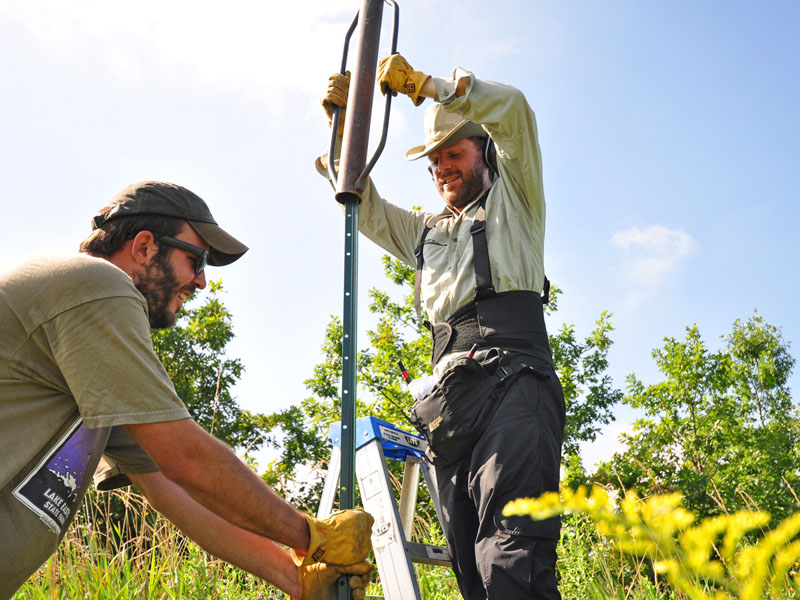
Dan and Brendan driving a post.
|
|
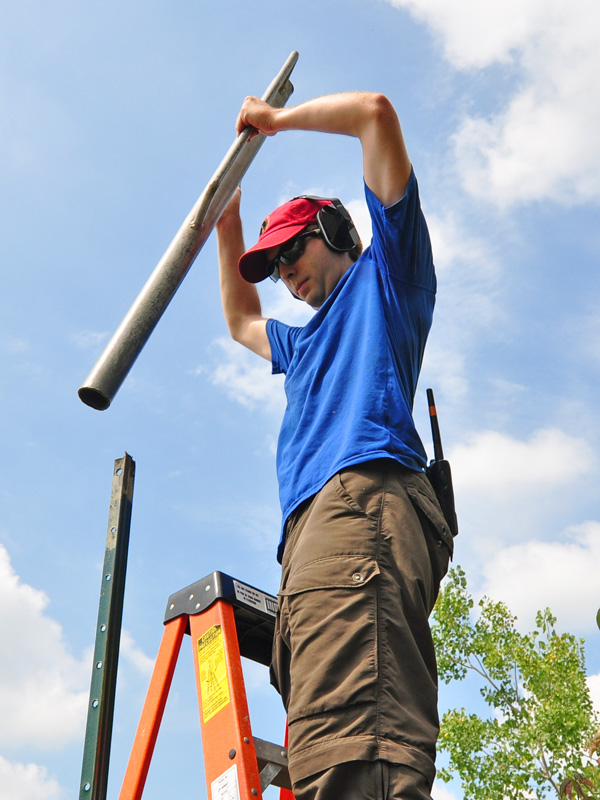 |
|
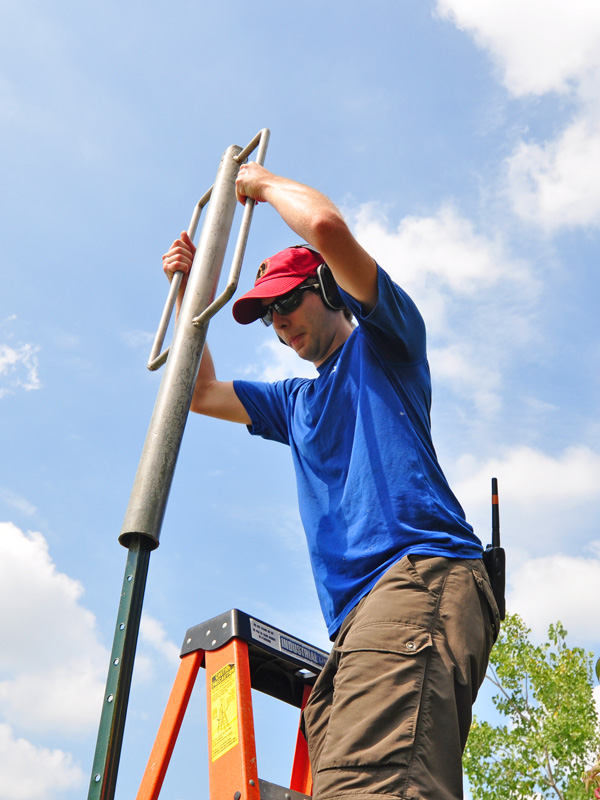 |
|
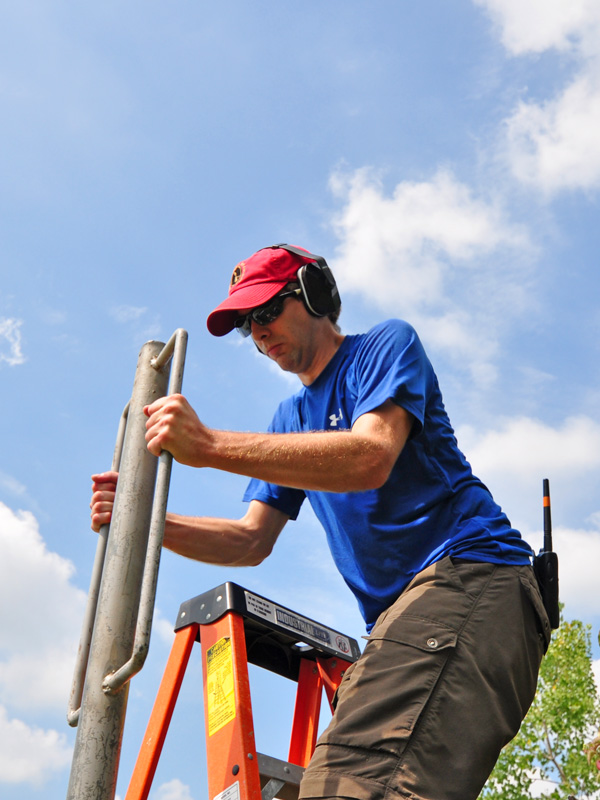 |
Kyle
drives a post two feet into the ground. We mounted our boxes on
eight-foot
t-bar posts, each driven two feet deep. The boxes will sit at a height
of six feet.
|
|
|
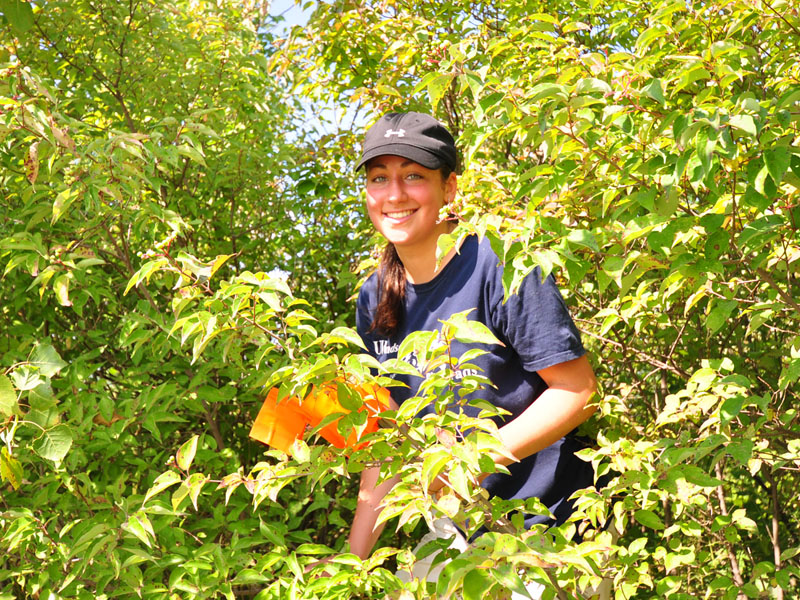
Sarah on the east shore of the lake at the Pelee Environmental Research
Centre, marking locations for the boxes.
|
|
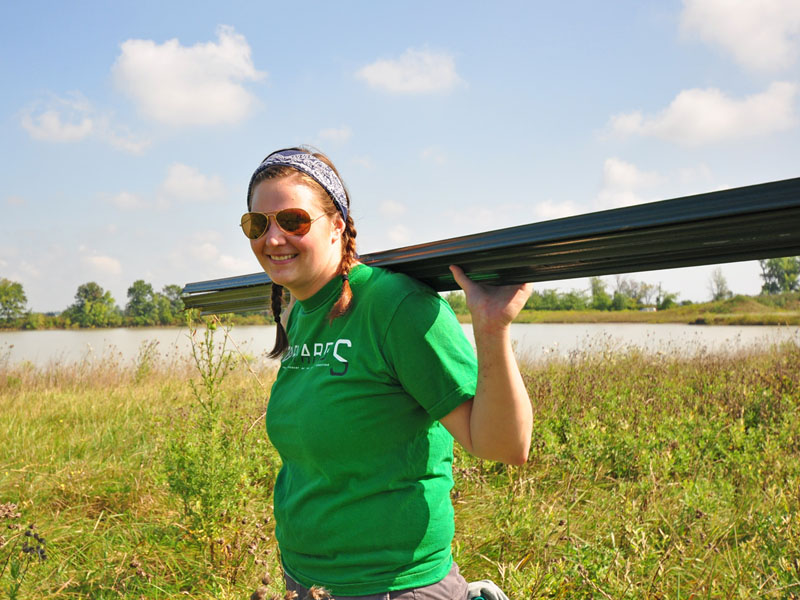
Tyne delivers the heavy steel poles to a ramming team.
|
|
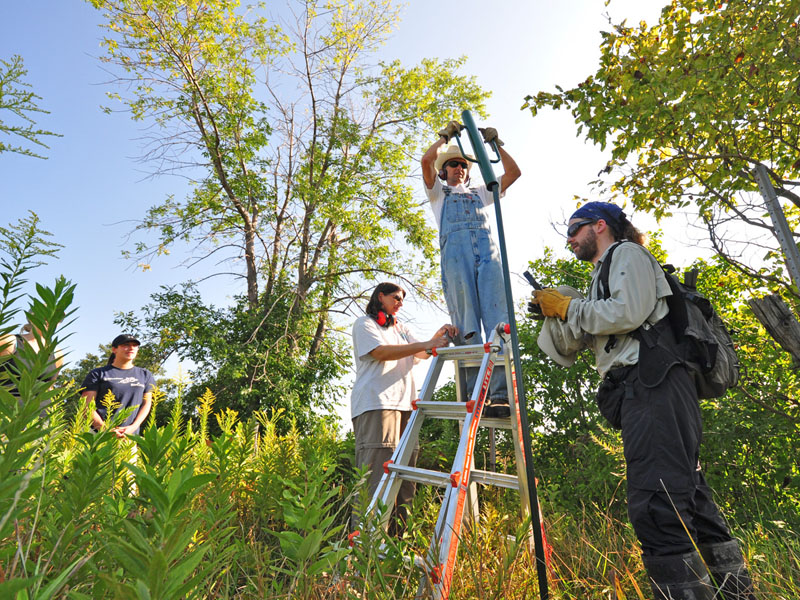
Dennis rams a post into the ground.
|
|
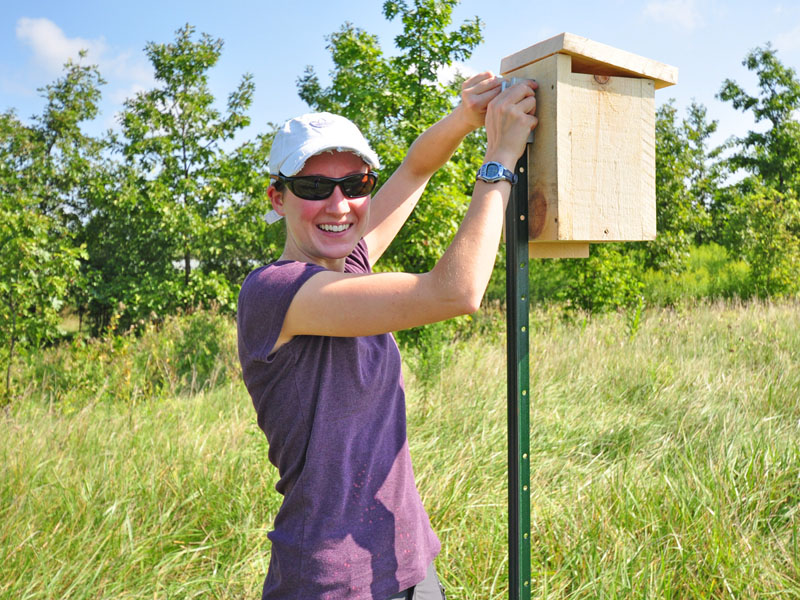
Kara attaches a nest box to a post.
|
|
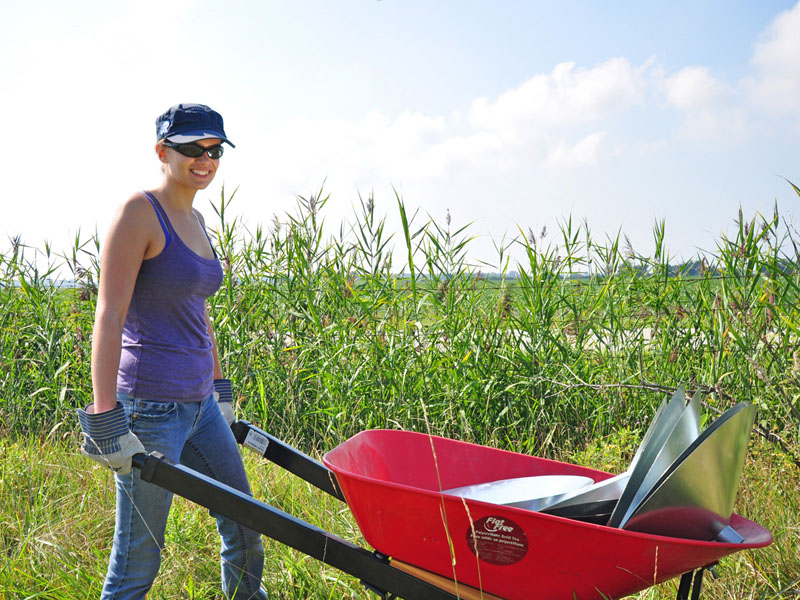
Katrina delivers predator cones to the nest box sites.
|
|
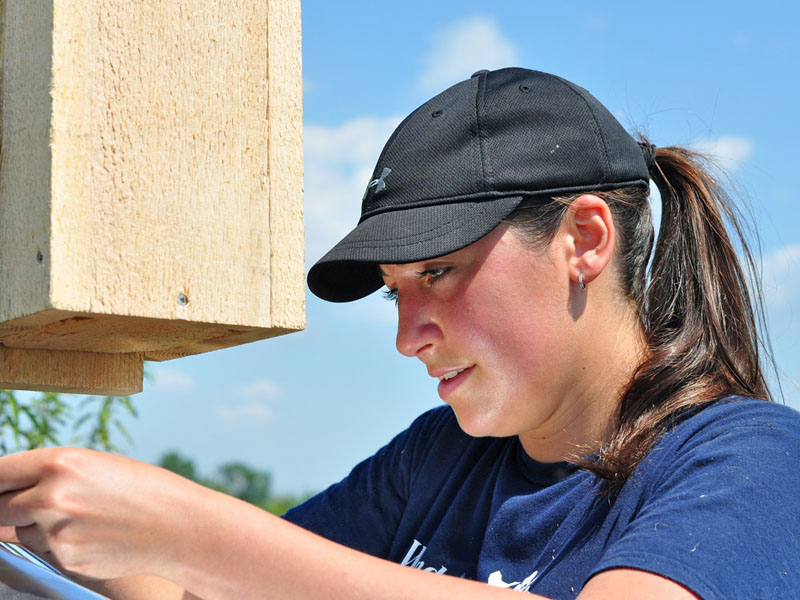
Sarah tightens the bolt holding the predator cone in place.
|
|
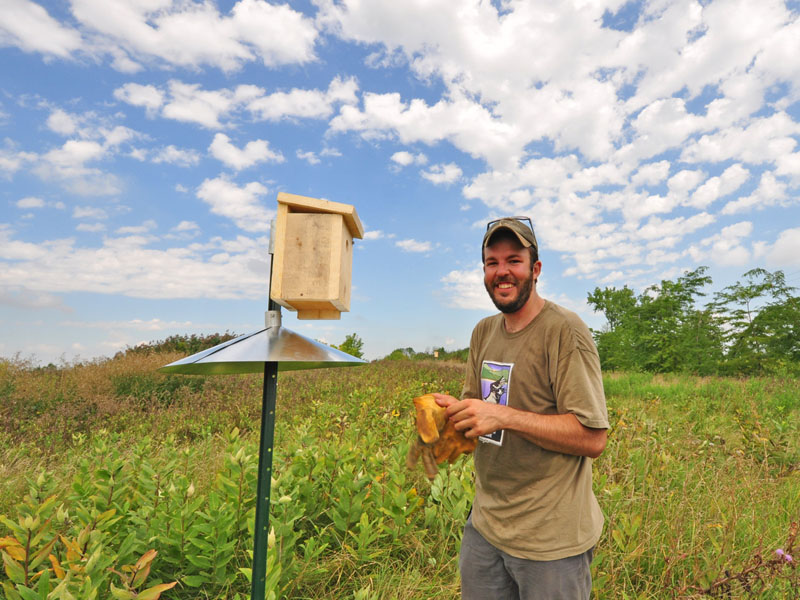 Brendan
finishes attaching a nest box and predator cone. Brendan
finishes attaching a nest box and predator cone.
|
|
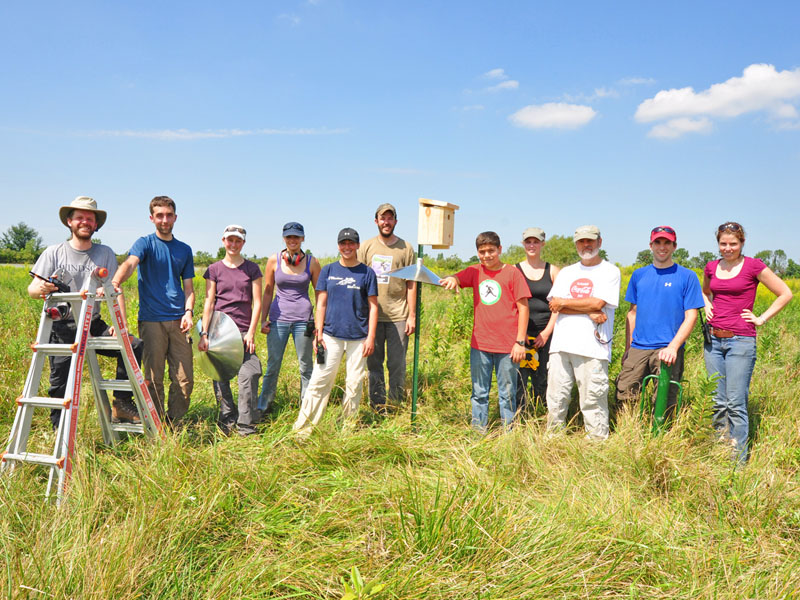
Outstanding in their field, the University of Windsor team poses next
to one of 51 Tree Swallow nest boxes. From left to right: Dr. Dan
Mennill, Dugan Maynard, Kara-Anne Ward, Katrina Lukianchuk, Sarah
Baldo, Brendan Graham, Chris Heath, Mackenzie Browning, Dr. Daniel
Heath, Kyle Wellband, and Dr. Stéphanie Doucet. The team
also
included Dr. Dennis Higgs, Dr. Kirsten Poling, Dr. Trevor Pitcher,
Kaitlyn Pitcher, Nancy Barkley, Paul Barkley, and Tyne Baker.
|
|
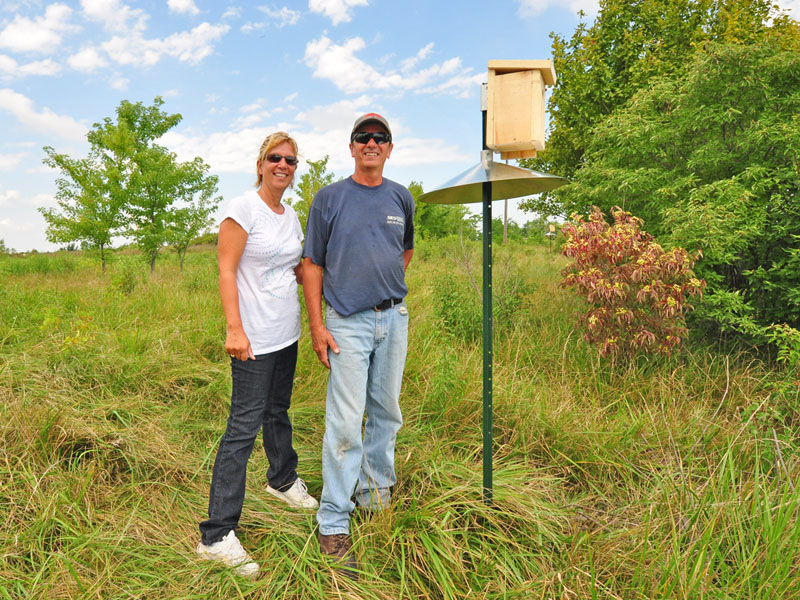
Nancy and Paul finish bolting a nest box.
|
|
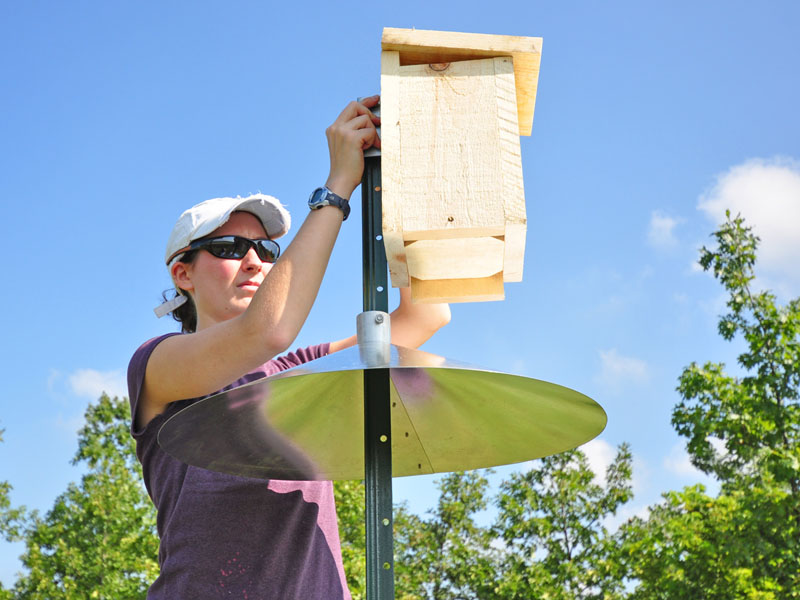
Kara tightens the bolts on a Tree Swallow box.
|
|
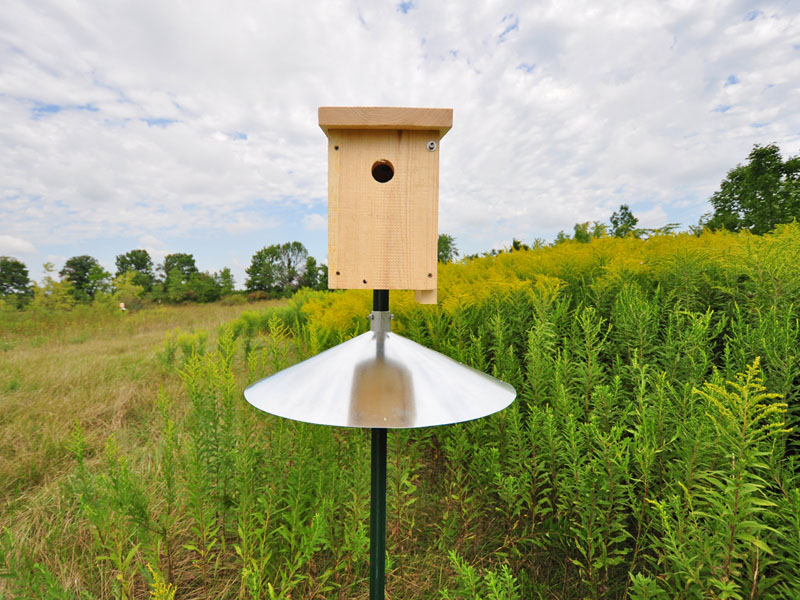
One of 51 Tree Swallow nest boxes at the University of Windsor Pelee
Enviornmental Research Centre at Leamington.
|
|
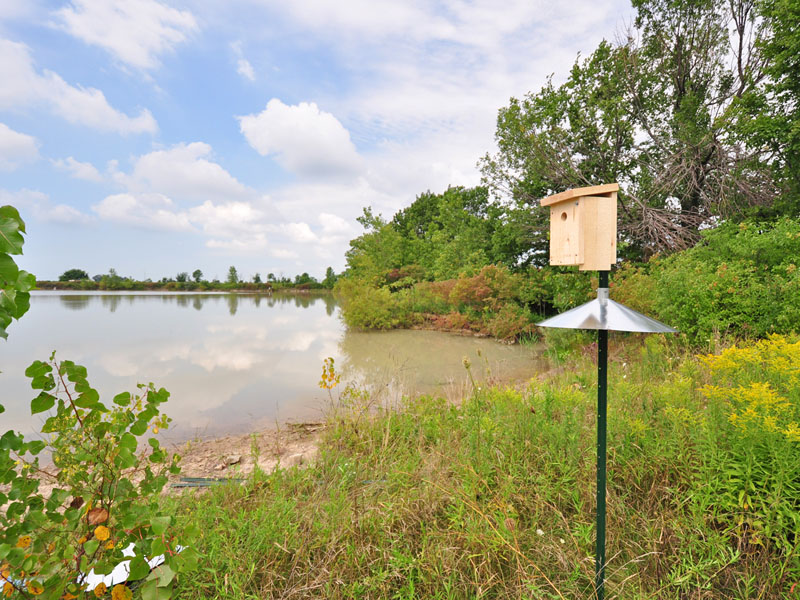
All of the boxes face south or east, which is the preferred orientation
for Tree Swallows.
|
|
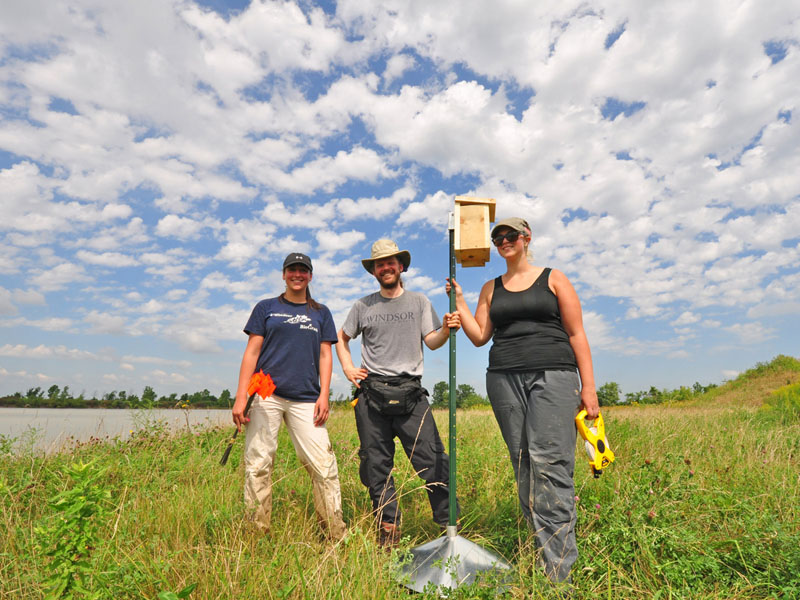
Sarah, Dan, and Mackenzie
check the spacing of the boxes and mount a predator cone.
|
|
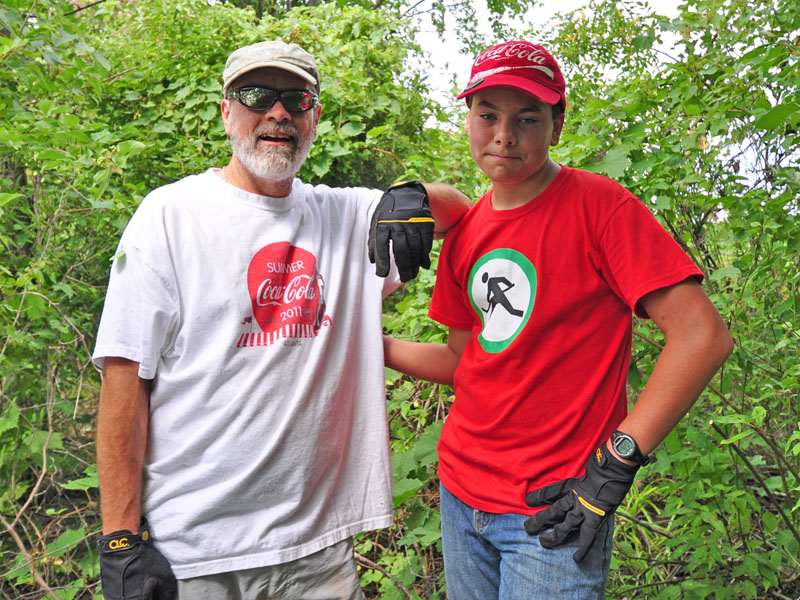
Daniel and Chris (team Coca Cola) pause from installing boxes on the
north shore of the lake.
|
|
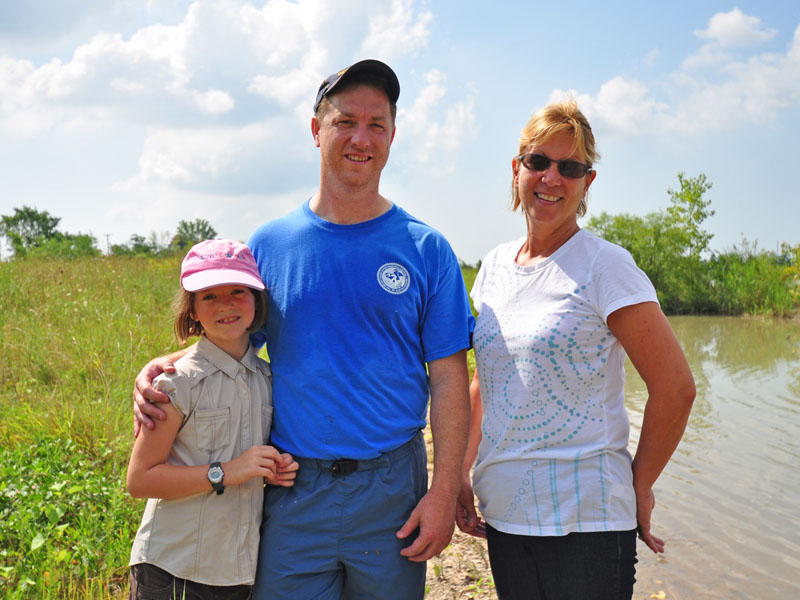
Kaitlyn, Trevor, and Nancy on the shore of the lake at the Pelee
Environmental Research Centre.
|
|
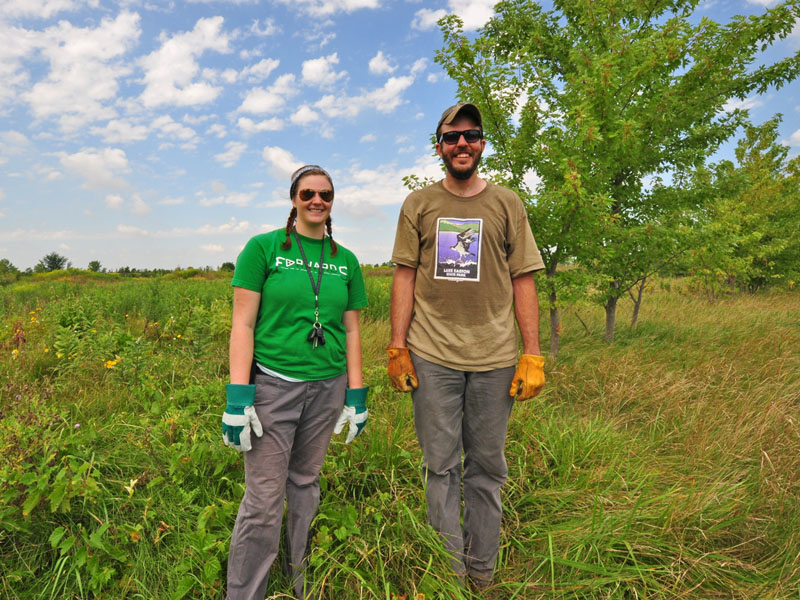
Tyne and Brendan after a long day of setting up nest boxes.
|
|
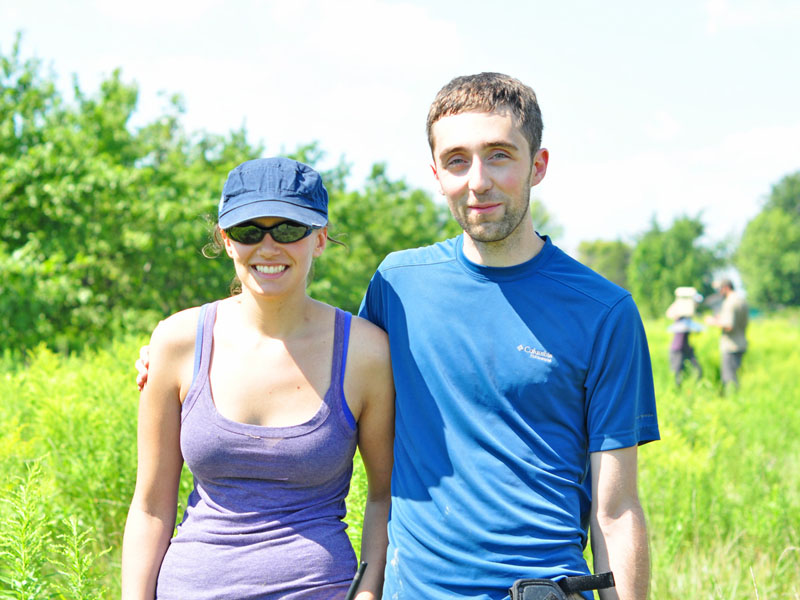
Katrina and Dugan finish their last nest box for the day.
|
|
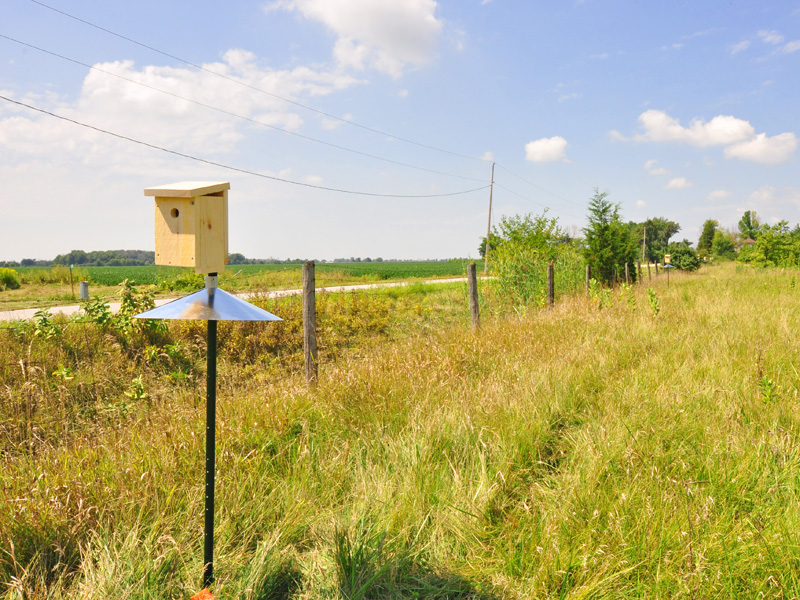
A line of Tree Swallow nest boxes spaced 30 m apart.
|
|
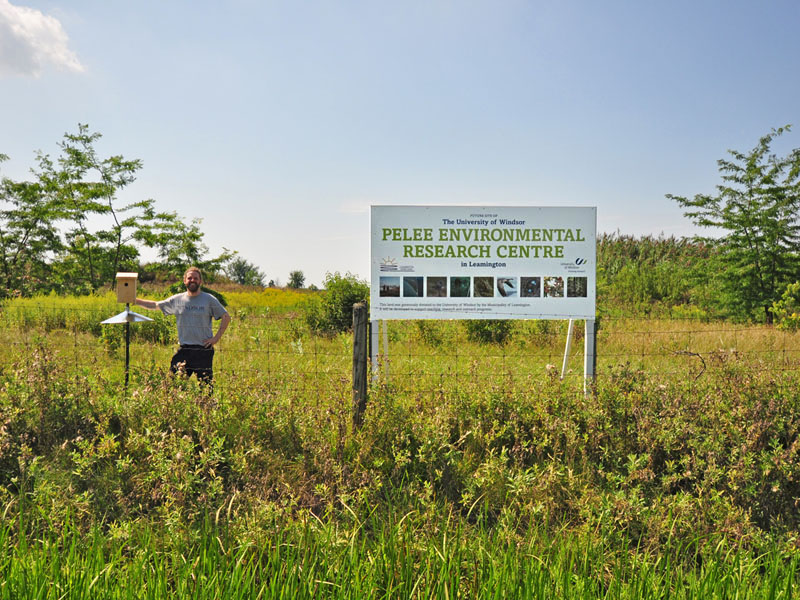
Dan poses between a Tree Swallow nest box and the Pelee Enviornmental
Research Centre sign.
|
|
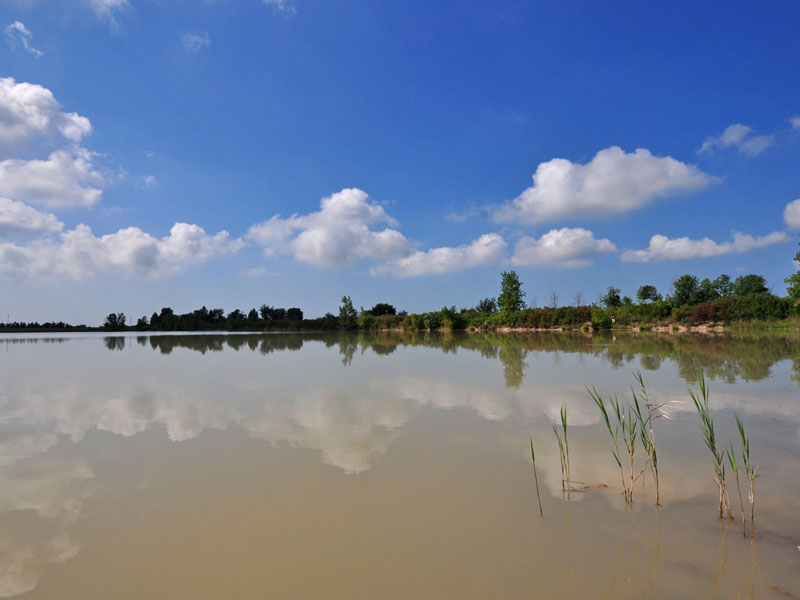
The view across the lake
at the
University of Windsor Pelee Environmental Research Centre at
Leamington. The aquatic habitat will provide excellent foraging
grounds for Tree Swallows as they begin to colonize the nest boxes in
the coming years.
|
|
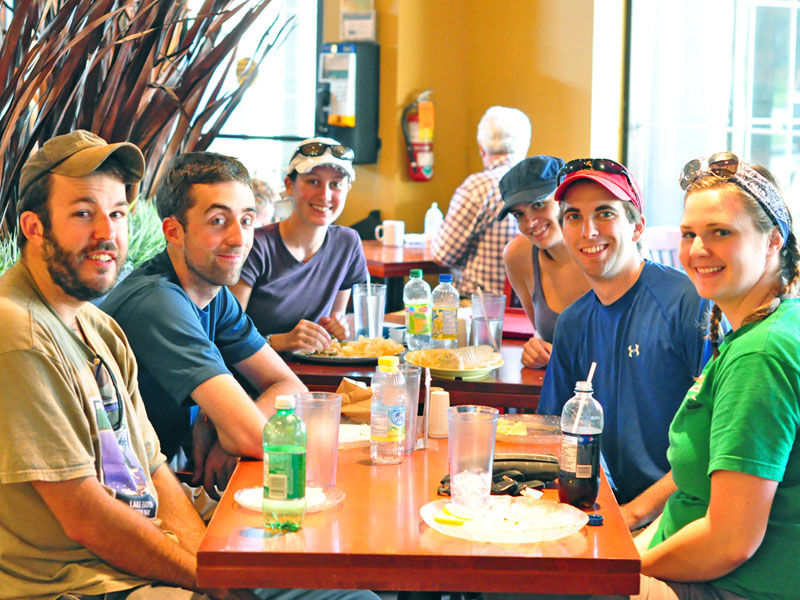
After a hard day's work, the team enjoys a meal at Leamington's
Lakeside Cafe and Bakery.
|
|
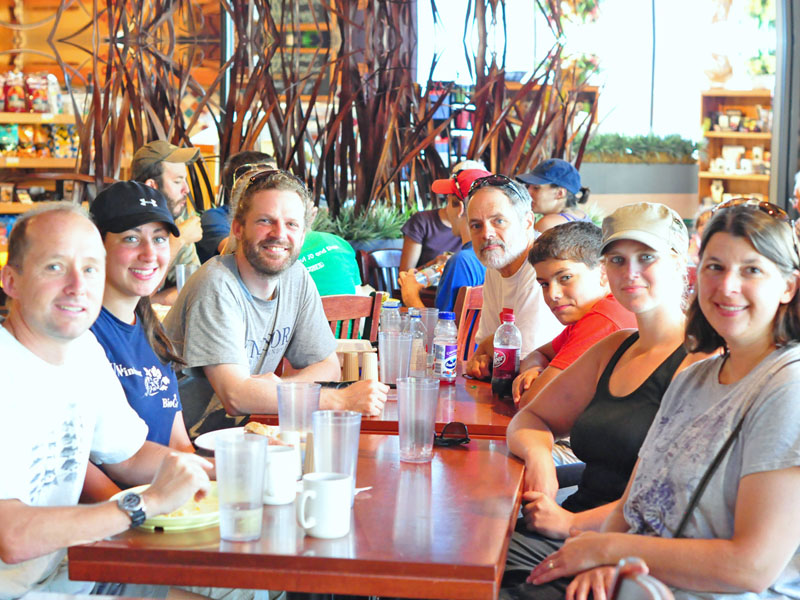
A late lunch at the Lakeside Cafe and Bakery in Leamington.
|
|
We
thank
everyone
who helped to set up the University of Windsor Tree Swallow Nest Box
Grid. We are deeply appreciative for the support of the
Municipality
of Leamington, who donated the property that is an integral part of the
Pelee Enviornmental Research Centre. We thank the Office of Research
Services and the Faculty of Science at University of Windsor for
financial
support. We thank Steve Budinsky, Dave Tremblay, and Rob Dumouchelle at
the University of
Windsor
Technical
Support Centre for building the boxes and predator guards. We thank
Stéphanie Doucet who documented our day's work in
photographs.
All
photographs on this page are copyright Stéphanie Doucet and Dan
Mennill
and may only be used with permission (dmennillATuwindsorDOTca).
|
|